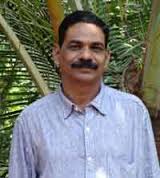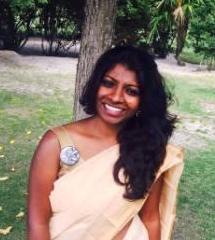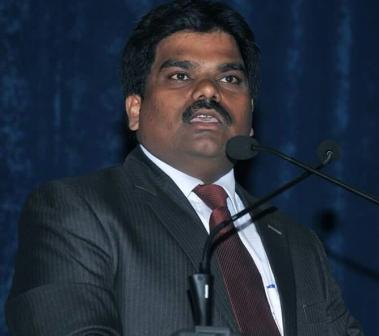KK Baburaj
 “Democracy is a process of becoming. It’s a promise. It’s in the name of that promise that we are able to question and criticize the existing form of democracy.”
“Democracy is a process of becoming. It’s a promise. It’s in the name of that promise that we are able to question and criticize the existing form of democracy.”
~ Derrida
“Dalit-backward-minority unity” and “Political Power to Bahujan Samaj” were some of the slogans raised by Ambedkarite organisations during the Mandal-Masjid period. There were strong discourses in the air as to the formation of another National movement or the necessity of a second freedom struggle.
Social and Political oppressions on Dalit Bahujans or religious minorities did not come down during the secular rule of the Congress which came to power after independence. It rather increased and the domination of the upper castes crept into every walk of social life. The economic policies of the Congress were designed to protect the interests of the imperialists. Naturally, the socialist organisations which were supposed to be opposing these injustices never had any constructive programmes that could address the sect of people, who were facing caste, religious and gender discriminations and exclusions. In fact, ideologically and practically the socialists were trying to revive the old nationalist movement. It was in this context that the concepts like ‘second freedom struggle’ and ‘political power to Bahujan Samaj’ reverberated across the nation.
I don’t think it is adequately right to assume that in States like Uttar Pradesh where Hindutva forces are showing their might are a result of their disintegrating the “caste politics” of Samajwadi Party-Congress alliance and “Dalit-Muslim unity” of Bahujan Samaj Party. But I believe, what is happening throughout India, is the retrogression or disappearance of the Liberal Hindu who claimed to have been representing officially the secular voice of nation.That means our logic of secularism is founded on the divide between “progressive Hindu” and “traditional Hindu”. Among these what helped the ‘progressive Hindus’ or ‘liberal Hindus’ to get prominence over the other is their assimilation of concepts of Gandhiji’s ‘sanathanhindu’ and Nehru’s view of ‘modernity’. Here Liberal Hindus, a sect which vehemently represents the secular upper castes, are being crushed down and won over by the traditional hindu block. This is what we are experiencing here as the multi-armed embrace of Hindutva across India.
How could the Sangh Parivar forces make such a massive advancement? Primarily it is the influence of the fascist propaganda framed by the RSS. To add to this they have the backing of corporate media and the anti-people bureaucracy also. Strong support of the neo-middle class which nurtures deep hatred towards the ‘other’ and the current global phenomena of a counter-shift towards right wing politics also favour them.
Along with the factors explained above the Sangh Parivar has succeeded in creating divisions among the sub castes in Dalits and created internecine rivalry between them. Same tactics of inter-caste rivalry they applied among backward communities also. This process, which is proudly described as renewed ‘caste engineering’ is essentially opposite to the ‘social engineering’ that Kanshi Ram promoted. Rather than empowerment and endorsement of Dalit Bahujans to power this process would only help re-establish the upper-caste supremacy. Appointment of Yogi Adityanath, (who has been absent in by election scenario,) as the chief minister, and the recapture of power by the Brahmin-Kshatriya lobby of the state politics, are discursive indicators of this caste engineering.
What mechanism pulled the Dalits and backward communities, all of a sudden, to such a caste engineering, which, if observed politically or on the basis of community, is nothing but a deceitful trap? A simple and straight answer to this would be, first: to prevent the ‘Muslim others’ from all entitlements, and second: honouring the responsibility of supporting the ‘common man-prime minister’ who is from a backward community and once was a chaiwala by profession. Also the popular belief of the people that their prime minister who hails from a very humble background has given a befitting reply to the rich, plunderers and the terrorists through demonetisation also turned advantageous to Sangh Parivar.
“Alter ego” of this common-man-prime minister Yogi Adityanath’s first decision, after taking charge as chief minister, were his orders to close all abattoirs, labelling them as illegal, across the State. This move cannot be viewed as an act that has a link directly to Hindu concept of purity or vegetarianism. The self-reliance and economic mobility of the Dalit /Backward and Muslim communities in several states including Uttar Pradesh are dependant on tannery trade and export of slaughter meat. Similar to what had happened during the colonial period, closure of these outlets and establishments would lead to extreme levels of deprivation and their subsequent mass migrations.
Another decision of Yogi Adityanath is the formation of ‘anti romeo sqauds’ at the pretext of controlling eve-teasers. This police system will work only in goonda style to tame free-living women, men and the new youth to a stereotype of the lives of Sathi-Savithris or Maryadapurushs as described in puranic texts.
In UP the Hindutva has buried ‘representational democracy’ by not fielding even a single Muslim and managed to secure a massive victory. What they have tried in Gujarat through blood spilling is replicated in UP through a bloodless war called ballot. In both places they have unified the Hindus by injecting hatred against Muslims to the bottom of the society. This underlines Dr B.R Ambedkar’s words, ‘Hindus from its caste base would emerge only in the period of violence against Muslims’.
A strong wave in favour of Sangh Parivar is still at its winning spree, in spite us having had a VP Singh government, several regional governments with political leaderships of backward communities, even after our country passed through Mandal Commission. The Sangh Parivar is still marching ahead in spite of the emergence of many Dalit-Muslim counter organisations, Rohit Vemula’s sacrifice and Una protests. Surprisingly, we don’t find a pressing demand in the manifestos and programmes of several organisations to call for social revolution or Dalit, Backward and Muslim unity.
“The existing ruling class, though appears fragmented and divided into different groups & sects, their relationship is bound by a strong lineage of heredity. This relationship helps them foresee any erosion or probable threat to their power and take measures to overcome it. At the same time those who are outside the power circle do not enjoy such a relation and hereditary bonding and are likely to get expelled very easily.”
Gail Omvedt reveals these facts on the functioning of the power structure of our society in the light of Max Weber’s social analysis. So, Dalit Bahujan people should strengthen their bonding consistently by co-living and by being more together to one another. Also they should reform their ways of communication to shorten the void between them and widen their sense of belonging. We have seen how the ‘savarna upper castes’ of the ruling class, the opposition and the socialist groups joined hands during the anti-Mandal period and defeated the genuine and legitimate interests of the Avarna majority.
It is problematic that the SP, BSP, Congress and the Socialist groups have a politics that go beyond the ‘protective policy’ of the Liberal Hindus.
For Sangh Parivar ‘the Nation’ that permanently protects them to hold on to a life of hereditary brahminhood is all that is important. This preserved existence, when gets internalised as warm as motherly embrace, the Avarnas and Muslims who lead a distinctintively ‘different’ life outside the brahmanic canopy, naturally become ‘others’. Among this ‘others’ Muslims who are overtly different in beliefs and morals are again isolated and projected opposite to ‘us’ hindus. Sangh Parivar thus constructs a myth of ‘We’ hindus as natural kith and kin to one another against the Muslim ‘other’ and manoeuvre racist attacks on them.
Our political/social thinkers and secularists, unfortunately, do not understand this. That is why they fail to separate the new social formulations like ‘Dalit-Backward-Minority unity’ or ‘Dalit-Muslim unity’, which are fresh platforms of coexistence and belonging, from traditional power centres. For them these platforms are mere political gimmicks conveniently formed to face elections.
When the Nation State becomes an establishment of oppression, ‘differences’ should come together to reform democracy structurally. Outside the ambit of old nationalist slogan ‘unity in diversity’ and the hindutva phrase ‘one nation’ emerges the imagination ‘coexistence of diversity’. The Dalits, Subaltern women, backward communities, Muslims, sexual minorities – such ‘differences’ are engaging in new discourses now. Emergence of these new formations should not be taken as a single unit but must be understood as distinctively different units, structurally diverse in nature with self-mobility to judge and act against the currents of day to day politics. To aim a ‘democracy’ that can transgress the existing Nation State the possibilities Bahujan people have in front of them are to accept multiplicities, harness mobility and embrace mixing.
~~~
K K Baburaj is a writer, social critic and Dalit activist based in Kerala.
This article was translated from Malayalam by Jayachandran J M.










